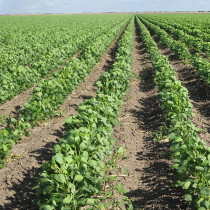YOUR TEXAS AGRICULTURE MINUTE
Federal court rules on dicamba use
By Gary Joiner
Publisher
As if America’s farmers didn’t have enough uncertainly to worry about, a federal court ruling last week added to their anxiety.
A U.S. Court of Appeals for the Ninth Circuit vacated the federal registration for three dicamba herbicide products. The ruling has major implications for farmers in Texas and around the country who purchased and planted seed intending to apply these products.
The vast majority of the 97 million acres of corn, 84 million acres of soybeans and nearly 14 million acres of cotton planted this year will use herbicide-tolerant varieties. These varieties are designed to effectively control weeds, which compete with crops for water, sunlight and nutrients in the soil.
The court decision means that, effective immediately, cotton and soybean farmers can no longer arguably spray dicamba herbicides on these crops. This is serious. The U.S. Department of Agriculture’s (USDA) most recent crop progress report indicates 75 percent of soybean acres and 66 percent of cotton acres have already been planted.
USDA is encouraging the Environmental Protection Agency (EPA) to do what it can to soften the blow. USDA hopes EPA will allow the continued use of already purchased dicamba products in fields that have been planted.
In the meantime, officials say agricultural retailers and farmers will be scrambling to secure alternatives, which may not be readily available in time.
Much legal wrangling lies ahead, but the consequences for weed control for farmers this summer could be dramatic if the ruling stands. More to worry about in an unprecedented time.
The preceding commentary is brought to you by Texas Farm Bureau, the “Voice of Texas Agriculture.” Called “Your Texas Agriculture Minute,” TFB will issue thought-provoking editorials each week—via print and audio—to spark understanding of agriculture in the Lone Star State and its impact on each and every Texan.
You may read this week’s editorial above or listen to the audio version.
Media outlets: This content may be used without further permission.

